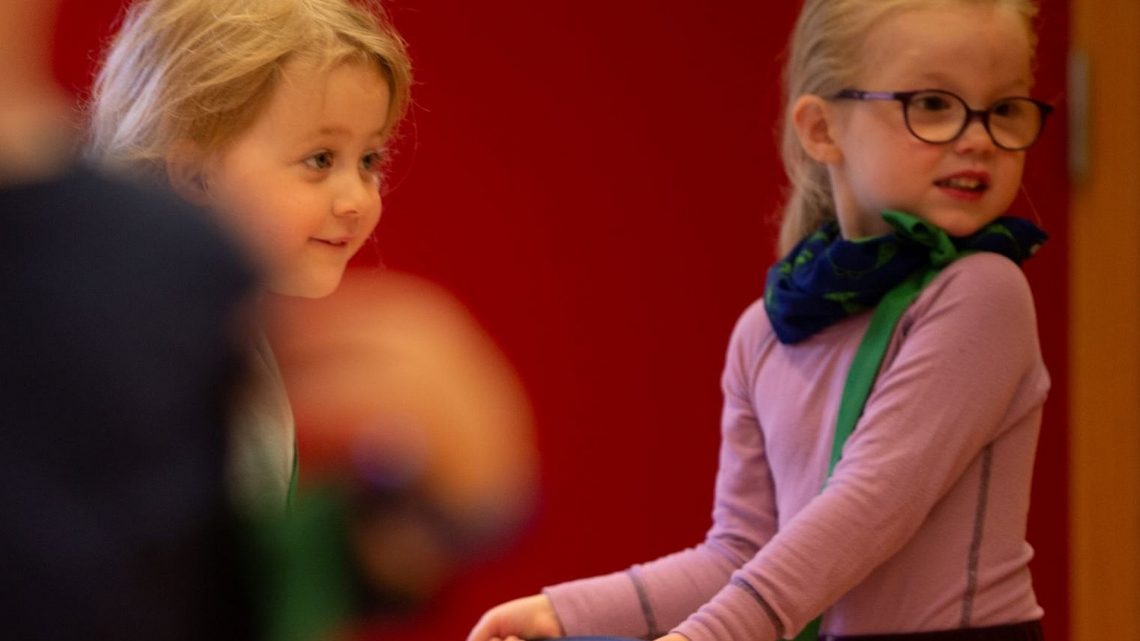
Objective
This game challenges the children to remember rules, and to start and stop movements upon various signals (verbal and visual), and to determine which information is important. The game starts off at an easy level with the children responding to a signal, but increases in difficulty when they have to respond to the correct signal when they receive two opposing signals.
Instructions
- The children pretend they are cars (by running) driving down a road following traffic lights. Preferably, they can make noises.
- When you shout “green light, go”, they can drive freely around. When you shout “red light, stop”, they must stop immediately.
- In the next part of the game, you do not shout anything, but either hold up a green cone/sheet of paper when the cars must drive and a red cone/sheet of paper when the cars must stop.
- In the third part of the game, you both shout and hold up the cone/sheet of paper. Sometimes these two signals will correspond with each other as you shout “go” and hold up a green cone/green sheet of paper. On other occasions there will be no correspondence between what you shout and hold up, e.g. by shouting “go”, but holding up a red cone/sheet of paper. If there is no correspondence between what you shout and hold up, the children shall follow the colour of the cone/sheet of paper that you are holding up (and ignore what you are shouting).
Tips
- When learning the game, the children could start out as a non-motorised road user in the traffic following the traffic lights. You can gradually get them to pretend that they are different types of vehicles and cars, so you can change their ‘driving speed’ as desired. The faster the cars drive, the more attentive the children have to be to avoid colliding with another car.
- Preferably, the adult could encourage the cars to drive crossways, thus also making the children more aware of the other motorists.
- Children enjoy using equipment, so they could with preference stand in a hula hoop, which would be the car, or use a spot marker as a wheel.
Variation
- For progression, when all the children have mastered the game well, the rules can be changed, whereby green means “stop” and red “drive”.
- If you wish to add another rule, include the amber light. The adult and children thereafter agree on what to do for the amber light.
Equipment
Cones or laminated green and red sheets of paper


